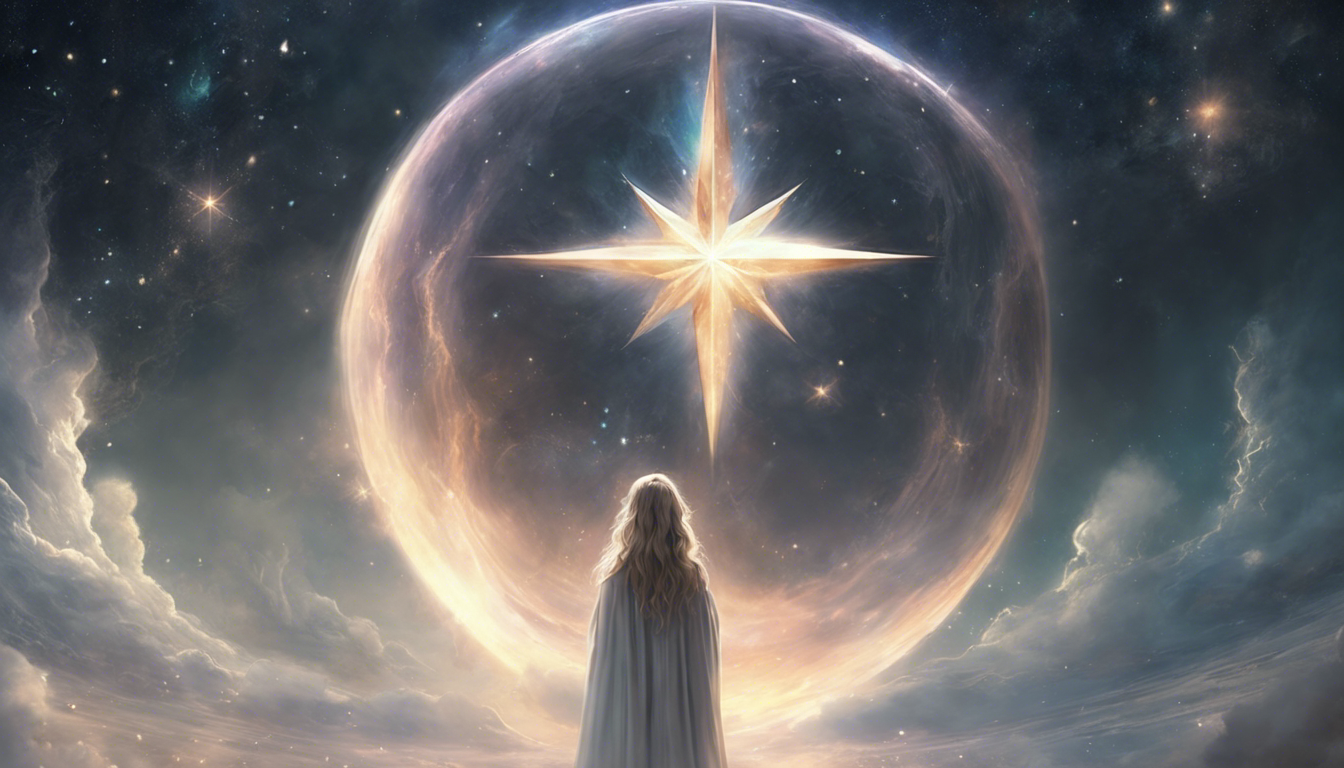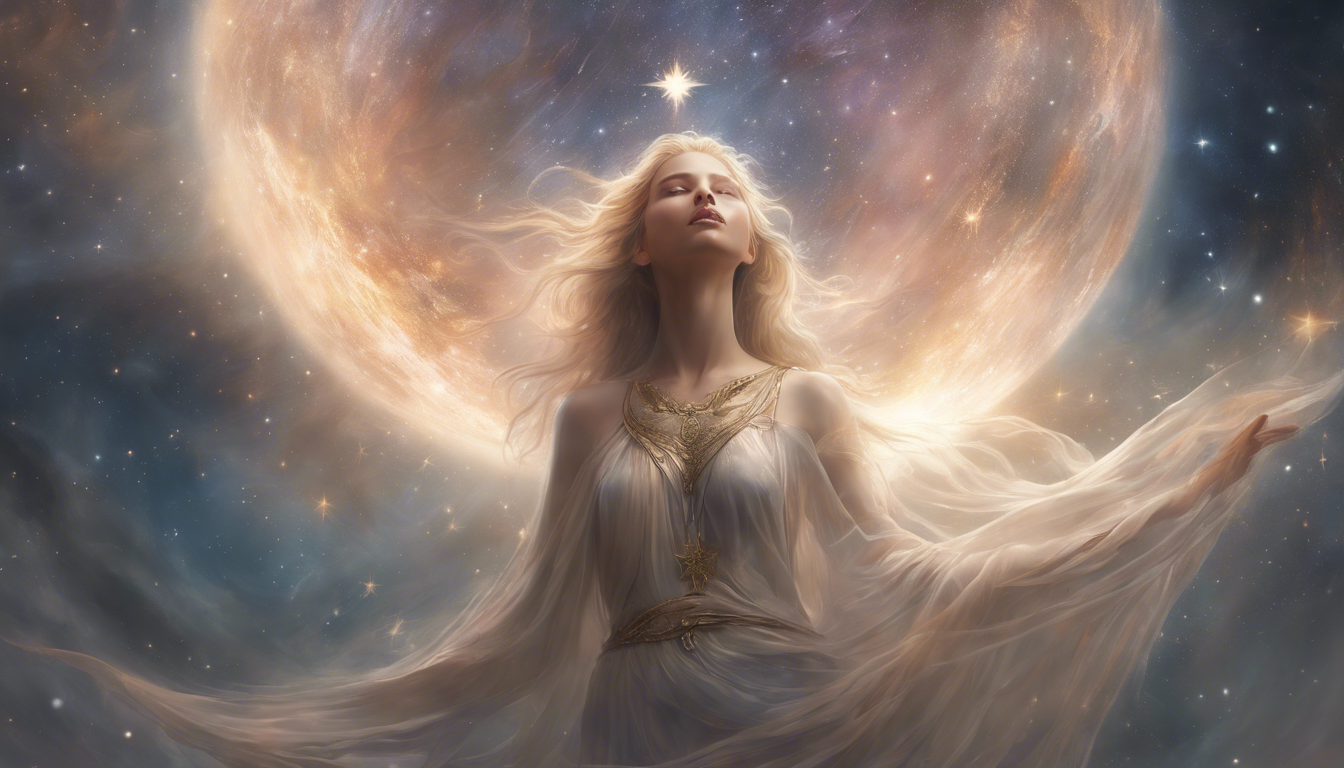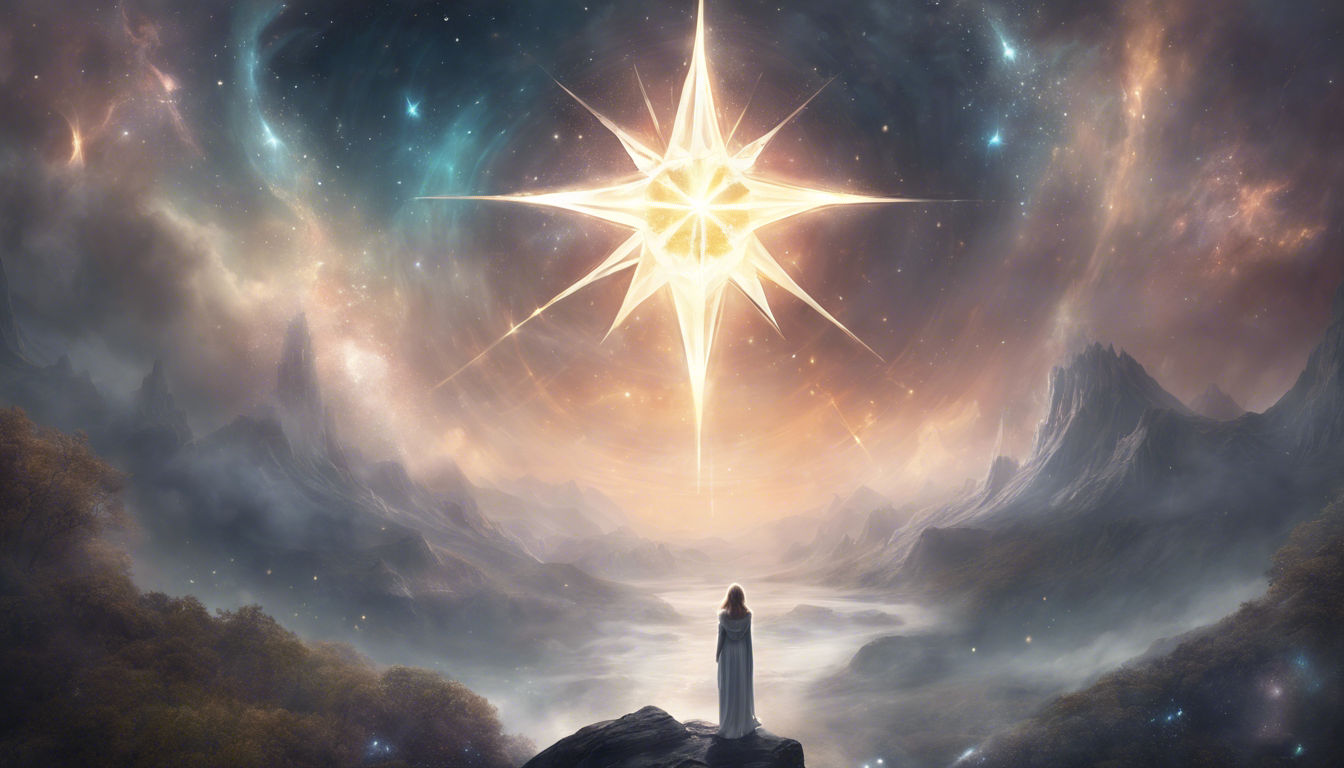Understanding the Symbolism of the Star
The Significance of Stars throughout History
Stars have captured the imagination of humans for centuries. Across different cultures and belief systems, the symbolism of stars has held great importance. From ancient civilizations to modern astrology, stars have been considered powerful symbols representing various aspects of life and spirituality.
Stars as Guides in Navigation
One of the most practical uses of stars throughout history has been for navigation. Sailors and travelers have relied on the stars to guide them on their journeys. The North Star, also known as Polaris, has been particularly significant in helping sailors navigate their way across the seas. This practical use of stars as guides emphasizes their importance as symbols of direction, guidance, and finding one’s path in life.
Stars as Symbols of Divinity
Stars have often been associated with divine beings and celestial realms in many belief systems. For example, in Christianity, a star led the Wise Men to the birthplace of Jesus. This star is believed to symbolize divine guidance and the presence of God. In other cultures, stars have represented gods and goddesses, celestial guardians, and divine inspiration. The brightness and luminosity of stars are seen as reflections of the divine light.
Stars as Representations of Hope and Inspiration
Stars are commonly associated with hope, inspiration, and dreams. When we look up at the night sky and see the stars shining brightly, it fills us with a sense of wonder and possibility. Stars are often used as symbols to represent the pursuit of dreams and the belief in a brighter future. They serve as reminders that even in the darkest of times, there is always a glimmer of hope.
Astrological Significance of Stars
In astrology, stars play a significant role in determining an individual’s personality traits and destiny. Each zodiac sign is associated with specific stars or star clusters that influence and shape the characteristics of people born under them. Astrologers believe that the alignment of stars at the time of a person’s birth can provide insights into their life path, strengths, and weaknesses.
Personal Interpretation of Star Symbolism
Interpreting the symbolism of stars is a personal and subjective process. Different cultures, belief systems, and individuals may attribute varying meanings to stars. Some may see them as signs of luck or protection, while others may view them as reminders of the vastness and mystery of the universe.
The symbolism of the star is universal and transcends cultural and religious boundaries. Whether as guides in navigation, representations of divinity, symbols of hope, or astrological influences, stars hold immense significance. They remind us of our connection to something greater than ourselves and inspire us to reach for the stars in our own lives.
As we gaze at the night sky, let us appreciate the beauty and symbolism of the stars, and let them guide us on our spiritual journeys.
Historical Significance of the Star Symbol

The star symbol is one that has captivated and intrigued humanity for centuries. Its significance can be traced back to ancient civilizations, where it represented a variety of meanings and purposes. From religious and spiritual connotations to astronomical significance, the star symbol has left a lasting impact on our history and culture. In this article, we will explore the historical significance of the star symbol and its diverse interpretations throughout time.
Ancient Cultural Interpretations
In ancient times, the star symbol held great spiritual significance. Many civilizations viewed stars as celestial beings or deities, linking them to the divine realm. For example, in ancient Egypt, the star symbol was associated with the goddess Isis, who was believed to guide souls to the afterlife. The Mesopotamians equated stars with gods and used them as a means of divination.
Astrological Significance
Stars have long been used in astrology to predict and understand human destinies. Each star, depending on its position and constellation, was attributed certain qualities and influences. Ancient civilizations believed that the alignment of stars at the time of birth could determine a person’s personality traits and future. This practice continues to this day, with many people seeking guidance from astrologers who interpret the positions of the stars and their impact on individuals.
Religious Symbolism
The star symbol plays a significant role in various religions. In Christianity, the star is associated with the Star of Bethlehem, guiding the three wise men to the birthplace of Jesus. In Judaism, the Star of David is a symbol of Jewish identity and represents divine protection. The Islamic crescent and star are symbols of faith and the connection with Allah. The star symbol can be found in numerous religious texts and art, representing wisdom, guidance, and divine presence.
Cultural and National Identity
Stars are often used to symbolize cultural or national identity. The American flag, for example, features a star for each state, representing unity and the shared values of the nation. In China, the five-pointed star symbolizes the five elements and is associated with good fortune. Stars also commonly appear in national emblems and flags as a reflection of a country’s history, values, and aspirations.
Modern Interpretations
In modern times, the star symbol has expanded beyond its religious and cultural associations. It has become a popular motif in fashion, art, and design. From star-shaped jewelry to starry night paintings, the star continues to inspire and evoke a sense of wonder and possibility. Its simplicity and iconic nature make it easily recognizable and versatile in various cultural contexts.
In Conclusion
The historical significance of the star symbol is profound and diverse. From ancient spiritual and religious interpretations to its role in astrology and cultural identity, stars continue to capture our imagination and serve as a universal symbol of guidance, protection, and connection. Understanding the historical context and interpretations of the star symbol allows us to appreciate its enduring significance in our lives and its timeless appeal in human culture.
References:
Interpretations of the Star Symbol Across Cultures

The Star Symbol: A Universal Language
The star symbol has been a powerful and captivating image throughout human history, transcending geographical and cultural boundaries. Across different civilizations and belief systems, the star has held various interpretations and meanings, often representing celestial bodies, spiritual enlightenment, and guidance. Let’s explore the fascinating interpretations of this symbol across cultures.
Ancient Mesopotamia: The Celestial Guardians
In the ancient Mesopotamian civilization, the star symbol was closely associated with their religious beliefs. The cosmos were believed to be governed by celestial deities, and stars were seen as divine beings or guardians. The Mesopotamians believed that these celestial guardians shaped their destiny and communicated messages from the gods. They engraved star symbols on amulets and seals to invoke protection and guidance.
Ancient Egypt: A Connection to Divinity
The ancient Egyptians revered the star symbol as a representation of divine manifestations. They associated stars with deities such as Osiris, Isis, and Horus, considering them as celestial beings guiding the journey of the soul after death. The star symbol in Egyptology also represented renewal and rebirth, leading to the concept of “becoming a star” in the afterlife.
Ancient China: Harmony and Fortune
Chinese culture holds a profound reverence for the star symbol, associating it with harmony and fortune. The Chinese character for star, 星 (xīng), is composed of two elements: 日 (rì), meaning the sun, and 月 (yuè), meaning the moon. This combination symbolizes the harmonious balance of Yin and Yang, the cosmic forces shaping the universe. Stars are seen as signs of auspiciousness, bestowing luck and prosperity upon those who encounter them.
Native American Tribes: Guiding Lights
For Native American tribes, stars represented celestial guides and the interconnectedness of all living beings. Different tribes assigned their unique interpretations to the star symbol. The Lakota Sioux associated stars with the spirits of their ancestors, while the Navajo considered stars as the homes of their deities. The Pueblo people believed that stars held the spirits of deceased loved ones, watching over and guiding the living.
Modern Interpretations: Spirituality and Enlightenment
In modern times, the star symbol continues to inspire and hold spiritual significance. Many spiritual traditions, such as Wicca and New Age spirituality, associate stars with higher consciousness and enlightenment. Stars are often seen as portals to other dimensions or representations of the divine spark within each individual. They serve as reminders to explore the depths of one’s soul and connect with the vastness of the universe.
In Conclusion
The interpretations of the star symbol across cultures reflect our timeless fascination with the mysteries of the cosmos and our search for meaning and connection. Whether as celestial guardians, divine manifestations, symbols of harmony and fortune, or guiding lights, stars hold a universal language that transcends cultural barriers. Embracing the multifaceted symbolism of the star can ignite our own spiritual journey and remind us of our place in the vast celestial tapestry.
As we explore the symbolic meanings of the star, we come to understand that it is not just a visual icon, but a representation of something far greater – a connection to the divine, a guiding light, and a reminder of the infinite possibilities that exist within and beyond ourselves.
So, the next time you gaze up at the night sky and see the stars twinkling above, remember the rich and diverse interpretations that cultures across the world have bestowed upon this mesmerizing symbol.
Modern Uses and Meanings of the Star Symbol

The Mesmerizing Symbol of Stars
Stars have captivated humanity for centuries with their shimmering beauty and their symbolic significance. Across various cultures and belief systems, stars have been used to represent cosmic power, guidance, protection, and enlightenment. In modern times, the star symbol continues to hold profound meaning and is used in various contexts. Let’s explore the modern uses and meanings of the star symbol in this article.
Celestial Navigation and Guidance
Stars have long served as celestial guides, helping humans navigate the vastness of the night sky. In the past, sailors relied on stars for navigation during their sea voyages. Today, the star symbol is still used in navigation systems and maps, signifying direction and guidance. It reminds us that even in the darkest times, there is always a guiding light to lead us on the right path.
Recognition and Achievement
Stars are often associated with excellence, recognition, and achievement. In educational settings, students are awarded stars for their outstanding performance or behavior. Similarly, in the world of entertainment, the star symbol is used to represent fame and success. It has become a universal shorthand for talent, skill, and accomplishment.
Spiritual and Mystical Significance
In the realm of spirituality, stars hold deep symbolic meaning. They represent the celestial realm, connecting us to the divine and transcendent. Stars are often associated with enlightenment, inner wisdom, and spiritual growth. Many religions and belief systems incorporate the star symbol into their sacred iconography, such as the Star of David in Judaism or the Star and Crescent in Islam.
Protection and Warding Off Evil
The star symbol is also believed to have protective properties. Across various cultures, star-shaped amulets or talismans are worn to ward off negative energies, evil spirits, and misfortune. These symbols provide a sense of security and act as a shield against harm. In popular culture, the star symbol is often associated with superheroes, representing their protective attributes and heroic qualities.
Decorative and Aesthetic Appeal
Beyond its symbolic meanings, the star symbol has found a prominent place in aesthetics and design. It is widely used in fashion, home decor, and graphic design to add a touch of brilliance and beauty. From star-shaped jewelry to star-patterned clothing and star-themed decorations, the star symbol continues to captivate our visual senses and add a touch of whimsy to our surroundings.
The star symbol’s significance goes far beyond its shimmering appearance in the night sky. It embodies guidance, protection, achievement, spirituality, and aesthetic appeal. Its versatile usage and deep-rooted meanings make it a timeless symbol that continues to inspire and resonate with people across different cultures and backgrounds.
Whether we look up at the stars for inspiration or wear a star symbol as a reminder of our own guiding light, the star remains an emblem of hope, wonder, and limitless possibilities.


Article written by Dera
Greetings, I am Dera, a 35-year-old individual with a deep passion for spirituality. Through my website, I aim to share my insights and knowledge to help others on their spiritual journey. Join me on the path to inner peace and enlightenment.